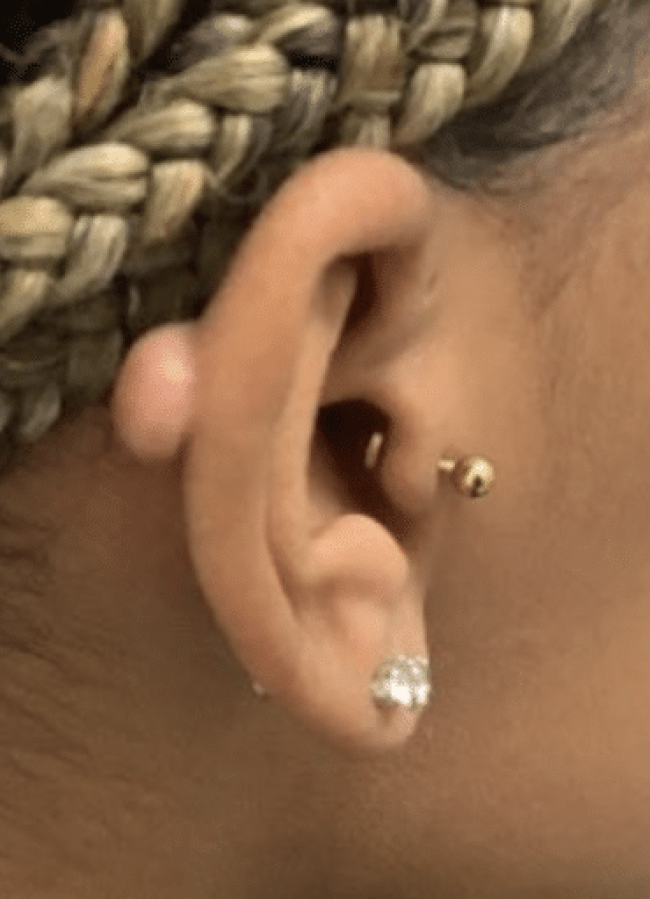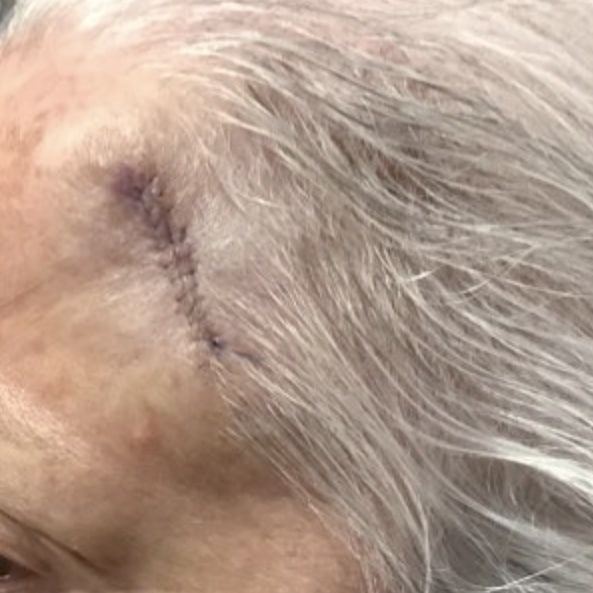Written By Dr. Mark Abdelmalek
One of the biggest fears patients have when considering surgery is the risk of an abnormal scar. Many times people ask, “Will I get a keloid?”
What is a Keloid?
Keloids are an abnormal type of scar that can happen after the skin is injured. They form in areas where the body has an exaggerated response to an injury– such as from a surgical scar, an acne lesion, cuts, piercings, traumatic injuries, tattoo sites, and vaccination needles. The body’s normal healing process involves producing collagen to heal the damaged skin. Normally, once the site has healed, signals are sent out to slow the healing process. However, in people who form keloids, the body produces too much collagen during the healing process. Unfortunately for people prone to keloids, even very minor trauma to the skin can trigger a keloid to form.
What Do Keloids Look and Feel Like?
Keloids are usually smooth, firm, thick, shiny and can feel rubbery to the touch. Most of the time, keloids are simply a raised bump or mass under the skin, but don’t have any other symptoms. However, some keloids can be itchy and painful.
How Do I Know if a Scar is a Keloid?
Normal scars are flat and can be slightly lighter than the surrounding skin. While normal scars can sometimes spread a little, they do not typically increase in size and grow.
A key feature of a keloid scar is that it grows and extends significantly beyond the original border of the injury. For example, a small ear piercing can result in a large keloid that changes the shape of the ear dramatically.
There is an inbetween type of scar- not quite a normal scar, but also does not meet criteria to be called a keloid. These scars are called hypertrophic scars. They can appear similar to a keloid, but they remain confined to the borders of the original injury.
Where Do Keloids Usually Form?
Keloids can form anywhere on the body. However, there are certain areas that are more prone to keloids like:
- Earlobes: After piercings, some people develop keloids. These can occur anywhere along the piercing track including the front of the ear lobe, within the earlobe itself, and even on the back of the earlobe.
- Chest and Back: People who have severe or cystic acne can develop keloids at previous acne sites
- Shoulders and Arms: Keloids can form in these areas after tattoos, surgery, or vaccinations.
Who is Most At Risk For Developing Keloids?
Keloids can happen to anyone, but people with darker skin types and people with a history of keloids in their families are more likely to develop keloids.
In this month’s edition of JAMA Dermatology, researchers describe what kinds of other skin conditions can be associated with keloids. Researchers looked at nearly 1000 patients with excessive scarring and found that 65% of those scars occurred in females. Their findings confirmed what has previously been known about the higher risk of keloids in darker skin types. They also found that people with high blood pressure and certain types of eczema can be associated with keloids.
How Are Keloids Managed?
Keloids can be challenging to treat. Often there is no way to completely erase a keloid, but dermatologists have been using a few treatment approaches with success for years.
The most common starting point to treat keloids is injections into the keloid with steroids. This can reduce the size of the keloid and can shut down the keloid formation process by reducing inflammation in the area. This is not a one-time treatment. Multiple injections are usually required to soften and flatten a keloid. Injections are not without side effects, including a lightening of the skin around the injection points.
After a series of injections, careful consideration can be given to surgically removing what is left of the keloid after the injection series. Because keloids are an exaggerated response to a scar, further surgery to remove a keloid always carries the risk of making the keloid worse. Keloids also have a high recurrence rate after surgery and can sometimes form a larger keloid than what was there initially.
If a surgical approach is taken, close monitoring of the site after surgery is very important. Starting a silicone sheet or gel after surgery can help improve the scar. If the site shows any sign of keloid recurrence after surgery, injections can be started quickly before the keloid has a chance to fully reform.
There are also creams that can be used after surgery to alter the signal responses in the area that can help lower the chance of keloid recurrence.
If you are experiencing any of these symptoms or are concerned you may have a keloid, schedule an appointment with one of our board-certified dermatologists today.





